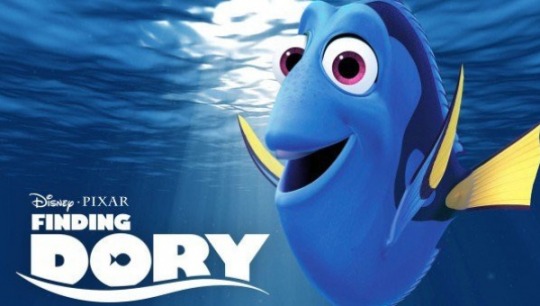#fish trade

Finding Dory, the sequel to Finding Nemo, is coming out today, June 17th 2016. A few years ago, Finding Nemo was such a massive success that it drove demand for pet clownfish through the roof, and resulted in hurting the wild population, instead of fostering an appreciation for marine animals in their natural habitats. Over 90% of the clownfish sold came from the big, blue sea! Let’s avoid doing the exact same thing with Dory, shall we?
The case of Dory, or the case of blue tangs, is a bit different from clownfish. A “Finding Nemo effect” and a similar pet-trade boom could have catastrophic results for this species.
First of all, blue tangs aren’t bred in captivity. Blue tangs are pelagic spawners, meaning that they need sufficient space to breed and mate in mid-water columns. Once the eggs are hatched in captivity, it is extremely difficult to keep them alive. This means that every blue tang you will see in tanks or at the pet store has been taken from the wild.

Second of all, chances are they were taken illegally.Regulations and their enforcement vary from country to country, but live saltwater fish like Dory are too often illegally collected using sodium cyanide as a liquid stun gun. For clownfish, scientists have witnessed local extinctions in areas they were collected in, and to the destruction of reefs and other species with this method.
Moreover, very little is actually known about the species. Subsequently, researchers don’t know if the blue tang population would be able to withstand increased demand after the movie release.
Behavioral ecologist Culum Brown works on fish cognition and welfare, and he reveals what is known about the species in an interview with NPR:
“You’ll be shocked to discover that we actually know very little about cognition in blue tangs. Correction … make that nothing. But that is true for the vast majority of the 32+ thousand species of fish out there.
"We know that their skin reflects light at 490nm (deep blue) and they tend to get lighter at night (this is under hormone control). They have very sharp spines on either side of their tail which erect when [the fish are] frightened. They have a huge distribution (Indo-Pacific) but are under threat from illegal collection. They graze algae on coral reefs, which is a very important job because it prevents the corals from being over-grown.”
So what can you do to save Nemo and Dory?

If you must have a clownfish in your tank, make sure it was bred sustainably in captivity and not taken from the wild. As for having a Dory, you get it, it’s a big no-no. Keep Dory on the reef.
The aquarium industry harvests more than 1 million clownfish from their natural habitats every year so they can be sold as pets. This overharvesting, along with other stressors like global warming, is likely leading to the depletion of clownfish populations in places like the Philippines and the Great Barrier Reef.
Captive breeding has proved to be a sustainable alternative that can meet the demands for ornamental fish like Nemo, without hurting the reef’s populations. Tank Watchis also an app that helps you identify the captive-bred (good) from the wild-caught (bad) fish.
While you go out and see this movie over the weekend, remember to educate yourself on the many species represented (including a whale shark and a beluga whale!). Many of them are under some sort of threat in the wild. All of these species are better off out in the sea, so if you fall in love with one of them and instead of taking Dory out of the ocean, I hope you moviegoers will support research, education and conservation!

